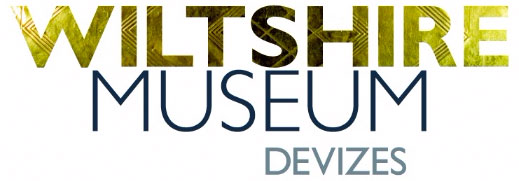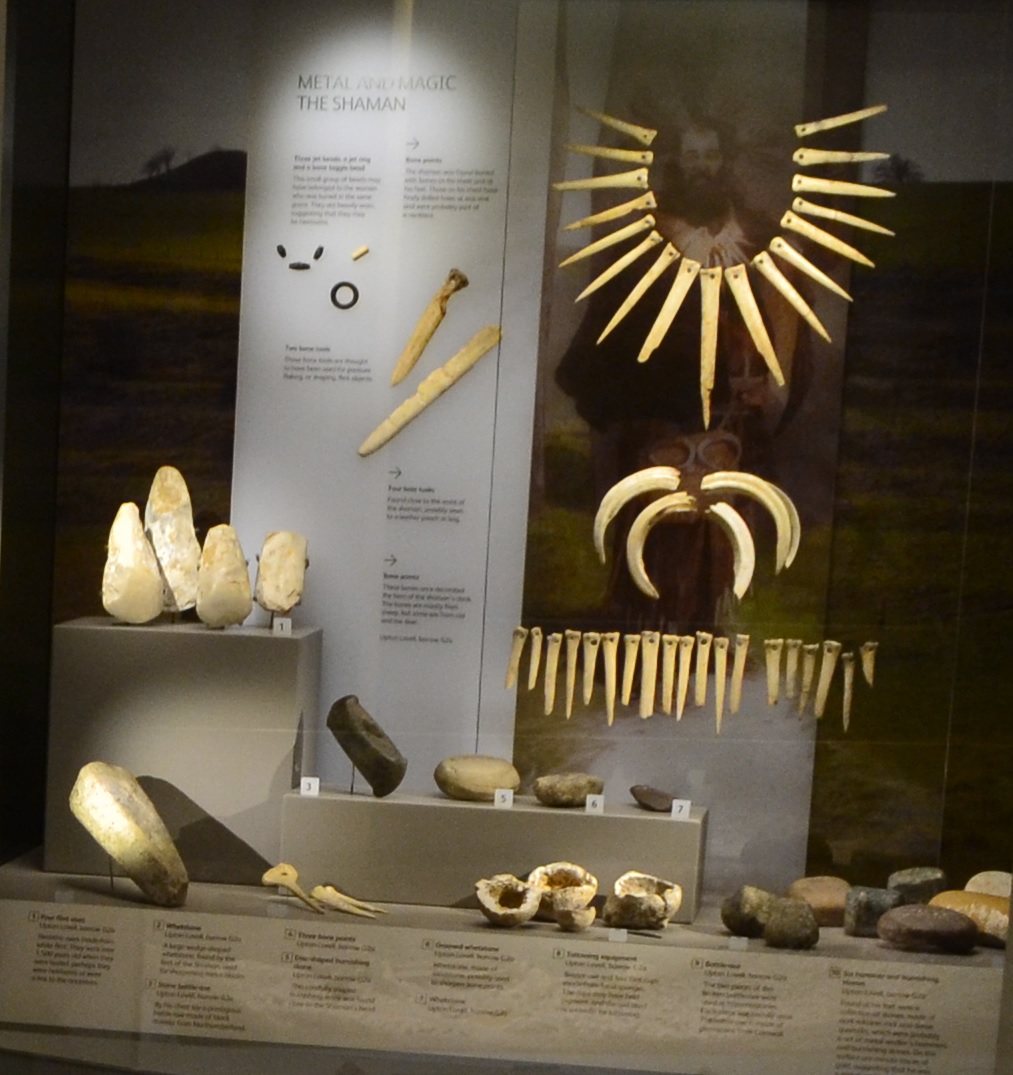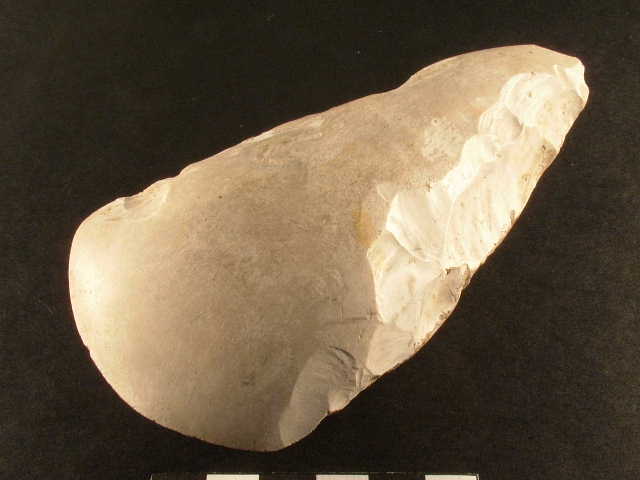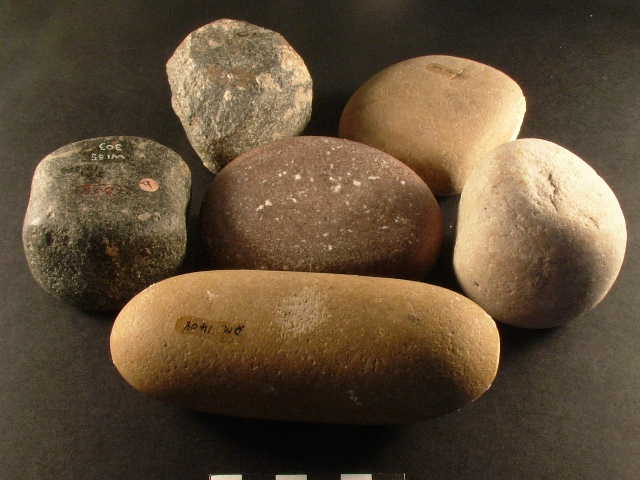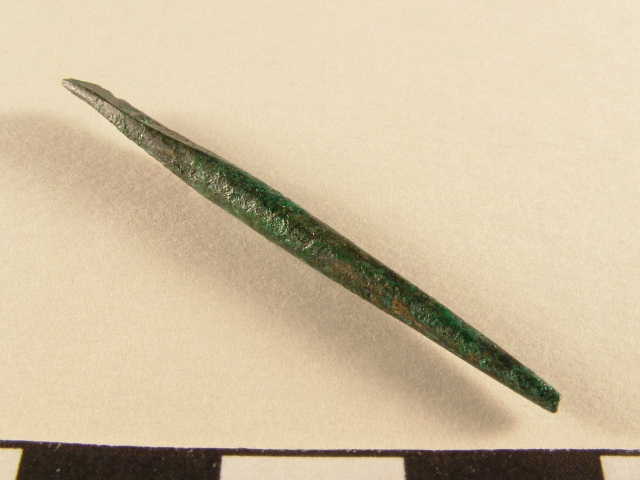Buried in a barrow at Upton Lovell, the Shaman was a metalworker and religious leader, in touch with the spirit world.
He was buried in his ceremonial cloak, decorated with pierced animal bones. These would have jangled as he walked and danced. He carried a magnificent dark coloured battle axe, made from greenstone brought from Cornwall.
He carried a pouch decorated with boar’s tusks, and a toolkit used for smoothing and burnishing gold, suggesting he was one of the very few who understood the magic of metalworking.
Placed next to him in the same grave was the body of a woman. She was carefully placed sitting upright, her head close to the surface of the barrow. She was buried with a necklace of polished shale beads and a fine shale arm ring. They were buried together on top of the ridge looking out over the river valley that led towards Stonehenge. Perhaps this was one of the routes that traders took, bringing rare objects and raw materials to the ceremonial centre at Stonehenge.
Published in December 2022, new research tells how each of the objects in the burial had a role in gold-working, ranging from cups made from fossil sponges used for mixing adhesives to battle-axes used to hammer and smooth the gold.
To find out more in this news article about the latest research, click here.
Video: Phil Harding talks about the Upton Lovell Shaman

